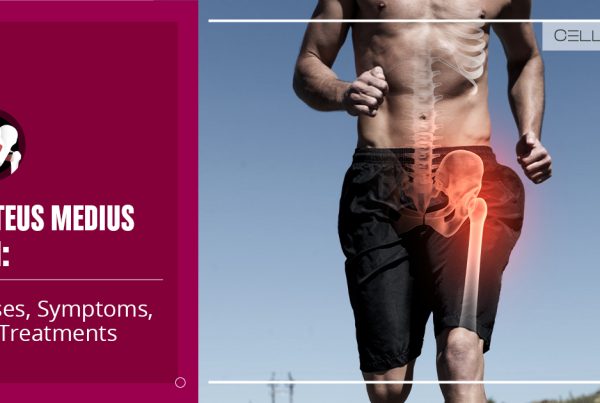Published on: December 30, 2022 | Updated on: January 18, 2025
Knee pain is a common condition that millions of people deal with every day. It causes muscle stiffness and cramps and reduces the daily activity level. While knee pain can be a natural sign of aging, many young people also go through this condition.
Knee osteoarthritis is a primary cause of knee pain; however, any sudden injury or trauma to the knee joint can only result in lasting pain. Regardless of the cause, knee pain affects the quality of life of many people.
Early intervention can prevent the pain from spreading in the entire leg and improve your daily mobility gradually. However, knee pain can worsen if not treated on time, leading to knee replacement surgery. Here are ten effective alternative treatments for knee pain to manage the pain and delay the surgery:
1. Heat and Cold Therapy
Hot and cold therapies effectively relieve many types of spine and sports-related injuries. While some conditions improve with cruel treatment, others show results with hot therapy. However, you can also combine both therapies to relieve quick, long-lasting knee pain.
Hot therapy will help you relax your stiff muscles and allow your knee joint to support the movement. The heat warms up the joint’s tissues, reducing morning stiffness, a common symptom of knee arthritis. Apply the hot therapy to your knee joint for 15 minutes twice or thrice daily.
If the knee pain causes numbness and inflammation in your knee, cold therapy or icing can help you reduce both of these things. This also helps in flare-up management. Like heat therapy, apply cold therapy for 15 minutes twice or thrice daily.
Remember that every person reacts differently to temperatures. So, find the right combination for yourself by testing both therapies for 1 to 2 weeks.
2. Physical Exercises
Practicing exercises regularly is generally a good practice to stay fit. But little do you know, it’s an excellent way to strengthen your leg muscles and manage pain. Strong muscles protect your knee joint from damage and draw blood toward it to keep the joint tissues nourished and healthy.
When your joint’s tissues are healthy, you will feel less pain when walking, climbing, and squatting. You can also opt for muscle-strengthening and stretching exercises to manage knee pain.
Stretching Exercises
The American Academy of Orthopaedic Surgeons says regular lower-body stretching exercises can help enhance your knee joint’s motion range and flexibility. However, you should always warm up for 5 to 10 minutes before starting your stretching exercises. Cycling or brisk walking are good warm-up options.
After warming up, you can practice the below stretching exercises to improve the flexibility of your knee joints:
- Heel and calf stretch
- Quadriceps stretch
- Hamstring stretch
Doing these stretches at least four to five times every week is recommended.
Muscle-Strengthening Exercises
Muscle-strengthening exercises can help you remove the pressure from your knee by supporting the muscles around the joint. Focus on your hamstrings, hip muscles, quadriceps, and glutes during the workout to achieve effective results.
Some practical muscle-strengthening exercises for knee pain include the following:
- Half squat
- Calf raises
- Hamstring curl
- Leg extensions
- Straight leg raises
- Side leg raises
- Prone leg raises
Remember that physical exercises don’t give immediate results but are long-lasting. After building up your knee strength, you should try practicing some low-impact exercises, such as:
- Yoga
- Tai chi
- Walking
- Swimming
- Stationary cycling
- Water aerobics
3. Knee Braces
Braces provide support to your knee joint from the outside. Some braces’ designs offer uniform compression to reduce swelling in the knee. They also minimize muscle stiffness to help you manage pain and perform your daily activities efficiently.
If your knee pain is due to severe conditions like torn ligaments or meniscus, the doctor will most likely recommend braces with side hinges for pain management. This design provides stability to your knee joint.
4. Dietary Supplements
Dietary supplements include natural ingredients that can help you reduce your knee pain. Unlike medications and injections, these compounds are safe and don’t pose adverse reactions. Some effective supplements for knee osteoarthritis pain include the following:
- Omega 3. Taking Omega 3 supplements will promote circulation in your body and help you control inflammation.
- Vitamins. A deficiency of essential vitamins can lead to joint pain and other knee conditions. So, including vitamin supplements in your diet can eliminate all such risks for future joint pain.
- Glucosamine Chondroitin. This supplement can protect the cartilage in your knee from deteriorating.
- Turmeric. This ingredient is known for its exceptional anti-inflammatory properties.
- CBD. Cannabidiol is a popular pain management treatment for many health issues.
5. Medications and Injections
Doctors suggest anti-inflammatory medications to relieve knee pain in people of all age groups. These medications treat the source of pain without damaging the knee cartilage.
Some popular over-the-counter pain relief medications include acetaminophen and several non-steroidal anti-inflammatory drugs (NSAIDs). However, if you want to take any other medication for your knee pain, you might need a prescription from your doctor.
Sometimes, doctors may also opt for injecting drugs into your knee. This treatment is minimally invasive, and the doctor fills the injections with the synovial fluid that helps with pain management. Joint pain relief injections are:
- Cortisone Injections. These injections instantly relieve pain, but their use is controversial in the medical world because of the side effects.
- Hyaluronic Acid. Injections with HA lubricate the joint, which reduces stiffness and helps with pain.
6. Weight Loss
Obesity and excessive weight are directly associated with bone-related conditions. Multiple research studies have found both factors a significant risk for developing knee osteoarthritis. However, if you have less than 25 BMI, you can quickly lose 5 to 10% of your body weight to remove pressure from your knees.
Remember not to aim to achieve quick results from your weight loss efforts. Instead, it’s a long-term approach that requires you to change your lifestyle and include physical exercises in your routine. The best way is to consult a dietitian to plan a healthy weight loss approach.
7. Physical Therapy
Physical therapy is also an excellent alternative treatment for knee pain. It is performed by physios who are trained healthcare professionals for pain management and muscle and joint-related issues.
For knee pain, an ideal physical therapy plan includes the following:
- Passive pain-relieving methods, such as electrotherapy, heat, or manual therapy
- Therapeutic exercises to improve mobility and help you return to your everyday life
- Information about pain management
These strategies can help you relieve multiple types of chronic pain, especially those related to knee osteoarthritis. However, having an excellent physical therapist makes all the difference, so ensure you have the best one by your side.
8. Arthroscopy
Arthroscopy is a minimally invasive alternative treatment for knee pain. The doctor makes tiny incisions near your knee and inserts a camera to view the damaged cartilage, meniscus, or tendons.
Arthroscopy repairs damaged components in the knee and removes meniscus tears, bone, and cartilage fragments from your knee joint. If knee pain is sharp enough to lock your joint, arthroscopy can be the best alternative treatment.
Unlike traditional knee surgeries, this method is less painful and has a quicker recovery period. Arthroscopy can also delay the need for knee surgery.
9. Osteotomy
Osteotomy is another effective alternative treatment for knee pain. In the procedure, the surgeon cuts your thigh bone to move the pressure from your knee joint. The process is typically helpful in managing pain in younger patients with deformities in only one part of the knee.
However, knee osteotomy isn’t recommended for most patients, especially older patients. Your doctor will thoroughly diagnose your condition to determine whether knee pain can be relieved with osteotomy. It’s generally an excellent alternative for knee pain.
10. Orthobiologic Treatments
The recent advancement in regenerative medicine has made getting a minimally invasive treatment for knee pain easier. Cell-based therapies (stem cell therapy) and platelet-rich plasma therapy (PRP) are the most popular orthobiologic treatments for knee pain. These methods are outpatient procedures, meaning the doctor will allow you to go home without spending a night.
At CELLAXYS, we perform both these treatments under sheer supervision. Depending on your knee condition, the doctor will opt for any of the two methods to help you manage pain.
Cell-Based Therapies
Also known as stem cell therapy, cell-based therapies harvest your own or “autologous” cells from two areas in your body: adipose (fat) tissue and bone marrow. These cells are then processed and reinjected into your knee to promote healing.
When the cells are extracted from your adipose (fat) tissue, the process is called Minimally Manipulated Adipose Tissue Transplant (MMAT). The doctor can perform MMAT in multiple parts of your body in the same procedure.
On the other hand, when healthy cells are harvested from your bone marrow, the process is called Bone Marrow Concentrate (BMAC). Both MMAT and BMAC take around 1.5 to 2 hours to complete. Your doctor may use live X-rays or ultrasounds to locate the exact point of pain.
Platelet-Rich Plasma Therapy (PRP)
PRP is a popular treatment for many orthopedic, spine, and sports-related injuries. The process is effective in knee pain management as well. The doctor draws your blood sample, separates platelets from it, and injects them back into your injury site.
Platelets are your body’s first line of defense. They perform three primary functions to promote healing in your body. First, platelets release 10 Growth Factors to promote new tissue development. Second, they attract healing cells from the blood, and lastly, they form a web-like structure to provide the foundation of healthy cell growth.
Many platelets in the injury site promote quick recovery from your knee injury. PRP is performed within 45 minutes, and you will go home right after the procedure. You’ll see improvement in your knee pain in a few days.
Sources
Footnotes
- Yen YM. Assessment and treatment of knee pain in the child and adolescent athlete. Pediatric Clinics. 2014;61(6):1155-73.
- Porcheret M, Jordan K, Jinks C, P. Croft in collaboration with the Primary Care Rheumatology Society. Primary care treatment of knee pain—a survey in older adults. Rheumatology. 2007;46(11):1694-700.
- McClinton SM, Cobian DG, Heiderscheit BC. Physical therapist management of anterior knee pain. Current reviews in musculoskeletal medicine. 2020;13:776-87.
- Ling HW. Why patients with knee pain still have symptoms despite the use of anti-inflammatory medications. International Journal of Orthopaedics Research. 2020;2(2):21-7.
- Edwards C, Rogers A, Lynch S, Pylawka T, Silvis M, Chinchilli V, Mosher T, Black K. The effects of bariatric surgery weight loss on knee pain in patients with osteoarthritis of the knee. Arthritis. 2012;2012.
- Järvinen TL, Guyatt GH. Arthroscopic surgery for knee pain. Bmj. 2016;354.
- Benjamin A. Double osteotomy for the painful knee in rheumatoid arthritis and osteoarthritis. The Journal of Bone and Joint Surgery. British volume. 1969;51(4):694-9.
References
- 8 Natural Home Remedies for Knee Pain. Healthline. Accessed 9/13/2023.
- Fourteen home remedies for knee pain. Medical News Today. Accessed 9/13/2023.
- 12 Natural Pain Relief Tips for Knee Osteoarthritis. Everyday Health. Accessed 9/13/2023.
- Knee Conditioning Program. The American Academy of Orthopaedic Surgeons. Accessed 9/13/2023.
CELLAXYS does not offer Stem Cell Therapy as a cure for any medical condition. No statements or treatments presented by Cellaxys have been evaluated or approved by the Food and Drug Administration (FDA). This site contains no medical advice. All statements and opinions are provided for educational and informational purposes only.
Dr Pejman Bady
Author
Dr. Pejman Bady began his career over 20 years ago in Family/Emergency Medicine, working in fast-paced emergency departments in Nevada and Kansas. He has served the people of Las Vegas as a physician for over two decades. Throughout this time, he has been met with much acclaim and is now the head of Emergency Medical Services in Nye County, Nevada. More about the doctor on this page.
Dr Pouya Mohajer
Contributor
Pouya Mohajer, M.D. is the Director of Spine and Interventional Medicine for CELLAXYS: Age, Regenerative, and Interventional Medicine Centers. He has over 20 years of experience in pain management, perioperative medicine, and anesthesiology. Dr. Mohajer founded and is the Medical Director of Southern Nevada Pain Specialists and PRIMMED Clinics. He has dedicated his career to surgical innovation and scientific advancement. More about the doctor on this page.









